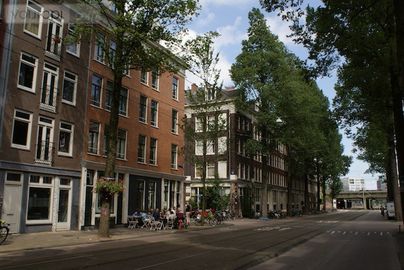

Eastern islands were built in the second half of the 17th century and were home to scores of shipyards as well as the Admiralty and the Dutch East India Company. The area in which the Czar Peterstraat, named after the Great Russian Czar Piotr The First, now lies was reclaimed from the IJ in 1663, although the street itself was constructed much later, in the 19th century. Ropes were woven for the East India Company in this area and, at the northern tip of what was to become the Czar Peterstraat, was the Keerweer, the point of entry for returning ships.
Back in the day, this area was studded with windmills. The last remaining one, other than the still standing De Gooyer, was the cocoa mill named De Goede Verwachting (The Good Expectation), which was demolished in 1906 to make way for houses. Jacob Olie, one of Amsterdams earliest photographers, has taken a photo of this mill in 1891 while its sails were being re-stretched with old canvas bags.
Although up until a few of years ago the street had a bad name, it has been in the upgrade phase since the arrival of tram 10 in 2004. Shops, garages, businesses in the creative sector and cafes popped up, making the street livelier than it had ever been before. At the southern end of the street, a construction project is underway to build more luxury apartments. At number 108 is the House with the Lions, so named after the lions on its faсade contains four lion heads.